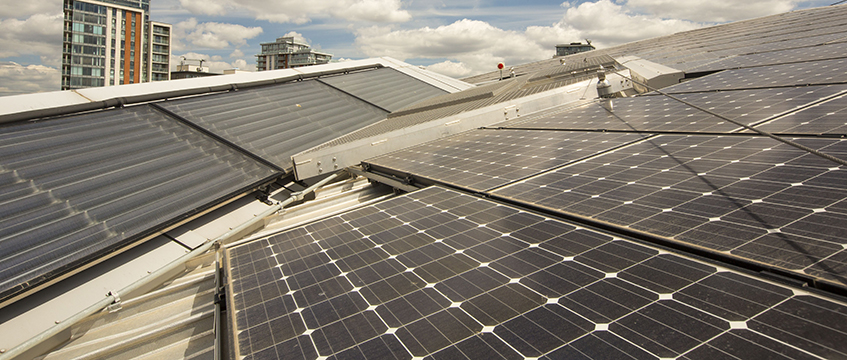How to unlock value and manage obsolescence risk
Delivering a sustainable property is easy if you are building from scratch. Perhaps not easy, but definitely easier than retrofitting or upgrading the vast majority of the UK’s existing built environment.
With more and more pressure to retrofit rather than rebuild, and increasing demands to deliver environmentally sound buildings, both from a regulatory point of view and from occupiers and lenders, fresh research from Knight Frank, shared exclusively with EG, reveals the business case for investment in upgrading existing assets.
The report, The Business Case for Action, examines 130 office retrofit and refurbishment projects undertaken in England and Wales between January 2020 and July 2024, all of which improved the building’s amenity and raised the EPC rating from C and below to EPC B and above.
Delivering a sustainable property is easy if you are building from scratch. Perhaps not easy, but definitely easier than retrofitting or upgrading the vast majority of the UK’s existing built environment.
With more and more pressure to retrofit rather than rebuild, and increasing demands to deliver environmentally sound buildings, both from a regulatory point of view and from occupiers and lenders, fresh research from Knight Frank, shared exclusively with EG, reveals the business case for investment in upgrading existing assets.
The report, The Business Case for Action, examines 130 office retrofit and refurbishment projects undertaken in England and Wales between January 2020 and July 2024, all of which improved the building’s amenity and raised the EPC rating from C and below to EPC B and above.
Green uplift
The results show an average 18% uplift in rental tone – when anchored against prime rents – across the UK. The report also provides new evidence that investment to bring office space up to the highest sustainability and occupational standards increases lease lengths and reduces void periods.
In London, retrofitted and refurbished offices that achieve BREEAM Outstanding or Excellent certification or an EPC A rating were found to pre-lease on average 5.6 months ahead of completion and secure lease terms of an average of 8.5 years. For projects that achieved BREEAM Very Good or EPC B, the average lease length was more than a year shorter at 7.4 years, with preletting achieved on average 2.3 months ahead of completion.
Having amenities added further rental growth, found Knight Frank. For projects that achieved above the average relative rental uplift, almost all (98%) included shower and changing facilities, some 84% had reception and concierge services and around 70% included gardens, terraces or other outside spaces.
Rewards at a cost
While the benefit of upgrading a building’s energy efficiency and adding amenities was clear in the added value of double-digit rental growth, longer leases and lower vacancy, such work does come at a cost.
Knight Frank calculates the baseline cost of upgrading an EPC D-rated London office building to meet the potential EPC B minimum at £113 per sq ft. The cost to upgrade was calculated at £79 per sq ft in Wales, at £81 per sq ft in Yorkshire and the Humber, and £84 per sq ft in the North East and North West. The East Midlands, West Midlands and East of England came in at £90 per sq ft, with the South West at £96 per sq ft and the South East at £101 per sq ft.
Using those figures, EG analysis estimates a circa £4bn hit for central London offices, with the City core bearing the brunt of that with a £1.5bn investment requirement.
Costs would rise further for investors wanting to tap into the benefits of added amenities, with Knight Frank estimating that this would take the upgrade cost to an average of £268 per sq ft, varying depending on location and building specification. Using EG figures again, this would see the cost to upgrade central London offices currently rated EPC D rise to £9.5bn, with City core investment rising to £3.6bn and every other submarket, bar the southern fringe, facing an upgrade cost of more than £1bn.
The time is now
Flora Harley, partner and head of ESG research at Knight Frank, said: “With 75% of office space set to fall below proposed sustainability standards by 2030 and occupier demand focused on sustainable and amenity-rich workspaces to enhance day-to-day occupancy, collaboration and productivity, there is an urgent need for landlords to upgrade and reposition older buildings.
“The decision on how to approach the retrofit and refurbish challenge will be determined by a wider variety of asset-level and market factors, but through this detailed analysis of recent projects we have been able to provide an indication of the relative rental uplift achievable, as well as increase in lease lengths and reduction in voids, all of which will underpin asset values.
“Cost and viability will be a challenge for some, but with the gap between the best workplaces and the rest continuing to widen, the cost of inaction is growing.”
Tim Robinson, head of consultancy at Knight Frank, added: “The rapidly evolving landscape – with sustainability regulations and growing physical, financial and functional risks – makes bespoke assessment and strategic asset management more important than ever to ensure value preservation and enhancement. It is vital that owners of older assets are proactive rather than reactive to get ahead of potential obsolescence risks and derive optimal asset performance.”
Find out more about how commercial real estate is rising to the challenges and opportunities presented by climate change at EG’s ESG Summit on 5 November. Secure your ticket here.
Photo © Global Warming Images/REX/Shutterstock











